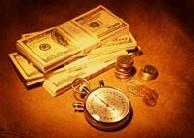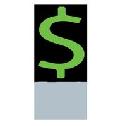
 |
|
| Financial Terms | |
| Operating cycle |
|
Information about financial, finance, business, accounting, payroll, inventory, investment, money, inventory control, stock trading, financial advisor, tax advisor, credit.
Main Page: accounting, payroll, investment, finance, financial advisor, business, credit, inventory control, Also see related: home buyer, buy home, insurance, financing, property, homebuying, mortgage, homebuyer, real estate, |
Definition of Operating cycle
Operating cycleThe average time intervening between the acquisition of materials or services and the final
Related Terms:Cash cycleIn general, the time between cash disbursement and cash collection. In net working capital Annual fund operating expensesFor investment companies, the management fee and "other expenses," Business cycleRepetitive cycles of economic expansion and recession. Cash conversion cycleThe length of time between a firm's purchase of inventory and the receipt of cash Expiration cycleAn expiration cycle relates to the dates on which options on a particular security expire. A Market cycleThe period between the 2 latest highs or lows of the S&P 500, showing net performance of a Net operating lossesLosses that a firm can take advantage of to reduce taxes.  Net operating marginThe ratio of net operating income to net sales. Operating cash flowEarnings before depreciation minus taxes. It measures the cash generated from Operating exposureDegree to which exchange rate changes, in combination with price changes, will alter a Operating profit marginThe ratio of operating margin to net sales. Operating leaseShort-term, cancelable lease. A type of lease in which the period of contract is less than the Operating leverageFixed operating costs, so-called because they accentuate variations in profits. Operating riskThe inherent or fundamental risk of a firm, without regard to financial risk. The risk that is Product cycleThe time it takes to bring new and/or improved products to market. Replacement cycleThe frequency with which an asset is replaced by an equivalent asset.  Short-run operating activitiesEvents and decisions concerning the short-term finance of a firm, such as OPERATING EXPENSESThe total amount that was spent to run a company this year. Budget cycleThe annual period over which budgets are prepared. Lifecycle costingAn approach to costing that estimates and accumulates the costs of a product/service over Operating profitThe profit made by the business for an accounting period, equal to gross profit less selling, finance, administration etc. expenses, but before deducting interest or taxation. cash flow from operating activities, or cash flow from profitThis equals the cash inflow from sales during the period minus the cash operating activitiesIncludes all the sales and expense activities of a business. operating cash flowSee cash flow from operating activities. operating leverageA relatively small percent increase or decrease in operating profitSee earnings before interest and income tax (EBIT). Operating Cash FlowIncome available after the payment of taxes, plus the value of the cycle timethe time between the placement of an order to degree of operating leveragea factor that indicates how a percentage change in sales, from the existing or current life cycle costingthe accumulation of costs for activities that manufacturing cycle efficiency (MCE)a ratio resulting from dividing the actual production time by total lead time; operating budgeta budget expressed in both units and dollars operating leveragethe proportionate relationship between product life cyclea model depicting the stages through Operating expenseAny expense associated with the general, sales, and administrative Operating incomeThe net income of a business, less the impact of any financial activity, Operating leaseThe rental of an asset from a lessor, but not under terms that would cash conversion cyclePeriod between firm’s payment for materials degree of operating leverage (DOL)Percentage change in profits given a 1 percent change in sales. operating leverageDegree to which costs are fixed. operating risk (business risk)Risk in firm’s operating income. Business CycleFluctuations of GDP around its long-run trend, consisting of recession, trough, expansion, and peak. Political Business CycleA business cycle caused by policies undertaken to help a government be re-elected. Real Business Cycle TheoryBelief that business cycles arise from real shocks to the economy, such as technology advances and natural resource discoveries, and have little to do with monetary policy. Payroll CycleThe period of service for which a company compensates its employees. Cash Flow Provided by Operating ActivitiesWith some exceptions, the cash effects of transactions Operating EarningsA term frequently used to describe earnings after the removal of the Operating IncomeA measure of results produced by the core operations of a firm. It is common Cycle countingThe frequent, scheduled counting of a subset of all inventories, Cash CycleThe length of time between a purchase of materials and collection of accounts receivable generated by the sale of the products made from the materials. Operating LeaseOne where the risks and benefits, as well as ownership, stays with the lessor. Operating Line of CreditA bank's commitment to make loans to a particular borrower up to a specified maximum for a specified period, usually one year. Operating LoanA loan advanced under an operating line of credit. Operating ExpensesThe amount of money the company must spend on overhead, distribution, taxes, underwriting the risk and servicing the policy. It is a factor in calculating premium rates. Related to : financial, finance, business, accounting, payroll, inventory, investment, money, inventory control, stock trading, financial advisor, tax advisor, credit. |